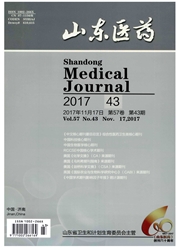

 中文摘要:
中文摘要:
目的优化大规模噬菌体DNA测序样品制备的方法,提高筛选效率。方法通过PCR扩增噬菌体环七肽库第一轮、第二轮和第三轮淘选产物中含插入目的片段噬菌体DNA,经琼脂糖凝胶电泳和DNA测序鉴定,并与经典的噬菌体DNA提取方法进行比较。结果PCR扩增法和经典法制备的噬菌体DNA的测序成功率分别为92.73%、93.75%,差异无统计学意义(P〉0.05);两种方法制备的同一个噬菌体克隆的DNA经测序鉴定显示测序结果一致;第一轮、第二轮和第三轮淘选产物的噬菌体克隆经PCR扩增和电泳鉴定,发现无插入目的片段的噬菌体克隆检出率逐轮增加分别为1.04%、4.17%和22.69%(P〈0.01)。结论PCR扩增含插入目的片段噬菌体DNA的方法可使大规模噬菌体筛选和DNA测序更加方便、快捷、实用,值得推广。
 英文摘要:
英文摘要:
Objective To optimize sample preparation for large-scale phage DNA sequencing, and to improve the efficiency of phage panning. Methods We amply phage DNA by PCR, which was the first inning, the second inning and the third inning elutriation product containing inserted fragments of phage loop seven peptide libraries. It was identified by agarose gel electrophoresis and DNA sequencing , and compared with classical extracting phage DNA methods. Results The successful sequencing rate of the new method was 92.73%, while the classical method was 93.75%. There was no statistical difference ( P 〉 0.05 ). The same phage DNA clone identified by resequencing was the same sequence which were preparated by the two methods. Phage colone of the first inning, the second inning and the third inning elutriation product identified by DNA augmentation and electrophoresis was finded that the detectable rates of phage clone without inserting purpose segments were separately 1.04%, 4.17% and 22.69% (P 〈 0.01 ). Conclusions The method of Phage DNA inserting purpose fragments by PCR amplification can make a large scale of phage screening and DNA sequencing convenient, fast, practical, and being worth to widespread.
 同期刊论文项目
同期刊论文项目
 同项目期刊论文
同项目期刊论文
 期刊信息
期刊信息
